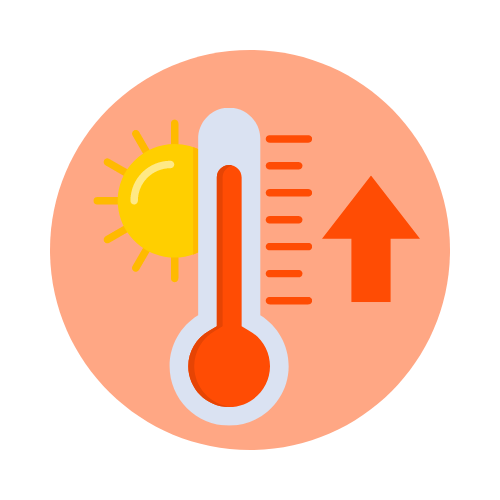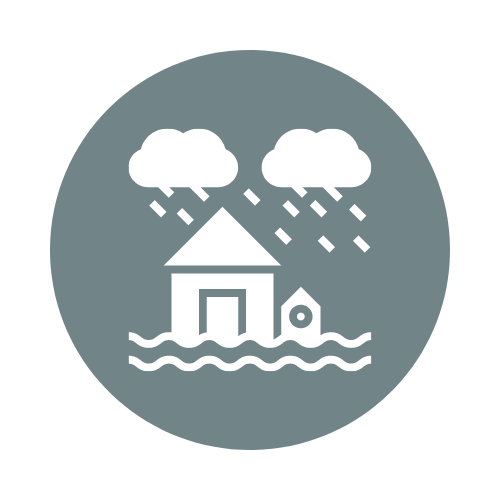Why adapt?
There is now a consensus on climate change and its human causes1. Multiple studies published in peer-reviewed scientific journals show that human activities are the primary cause of the observed climate-warming trend over the past century.
We know the earth is warming and that we now face inevitable change that can no longer be completely mitigated, with even the best-case scenario limiting the globe to an average 1.5 degree Celsius increase.
Climate science and data
The Intergovernmental Panel on Climate Change (IPCC) is currently in its 6th Assessment cycle and has recently released a series of working group reports based on the latest science, and finalised the Synthesis Report in March 2023. It calls for immediate and rapid decarbonisation if we hope to limit global warming to 1.5 degree Celsius.
For South Australia, the State Government has partnered with NSW in the "NSW and Australian Regional Climate Modelling" (NARCLiM) program. Led by the NSW Government in partnership with the ACT, SA and WA governments, and with contributions from UNSW and Murdoch University, regional projections will be expanded across Australia, becoming a product that can be used by governments, climate specialists in industry and researchers across Australia. Updated projections (NARCliM1.5) are now available, while NARCLiM2.0 will be based on the IPCC 6th assessment (AR6), and planned for release later in 2023.
Climate change projections
The Climate Change in Australia resource page presents past observational data from the Australian Bureau of Meteorology. Projections are focused on mid-century (2040-2059) relative to 1986-2005 (unless otherwise stated), in line with baselines used by the Intergovernmental Panel on Climate Change Fifth Assessment Report (IPCC AR5). Projections are based on a high emissions scenario (RCP8.5), and averages refer to the average of projected changes across the whole State.
South Australia is already experiencing the impacts of climate change.
- All of South Australia has warmed since 1910. Average annual temperature has increased by 1.6 Celsius since 1910.
- Since 1900, winter rainfall has declined and summer rainfall has increased over most of southern Australia. There has been a persistent decline in rainfall in the state’s southern agricultural areas2.
- The number of days with dangerous weather conditions for bushfires has increased across the region.
The climate of South Australia is projected to continue to change over the coming decades. By mid-century (2050), the following changes are projected3.

| Higher temperatures Warmer spring temperatures Hotter and more frequent hot days |
Maximum, minimum and average temperatures will increase. Warming in spring is likely to be greater than in any other season. The frequency of very hot days will continue to increase, and periods of hot weather will get longer and hotter. |

| Fewer frosts | The frequency of frost events will remain comparable until 2030. In the longer-term, frosts are expected to decrease as the climate warms. |

| Declining rainfall Lower spring rainfall More drought |
Average annual rainfall will decline. Spring rainfall declines will be greater than any other season. Time spent in drought will increase. |

| More intense heavy rainfall events | The number and intensity of heavy rainfall events will increase. |

| Increased potential evapotranspiration | Potential evapotranspiration is projected to increase across all seasons. |

| Wind | Wind speeds will remain comparable until 2030. In the longer-term, a pattern of winter wind speed decrease is likely. |

| More dangerous fire weather | Harsher fire weather will be experienced, and fuels will be drier and more ready to burn. |

| Rising sea levels | Sea levels will continue to rise. |

| Warmer and more acidic ocean waters | Sea surface temperatures will continue to rise, and acidity will continue to increase. |
Further information of projected changes for temperature, rainfall, fire weather, and sea level, as well as detailed regional projections for Adelaide, Clare, Coober Pedy, Keith, Mount Gambier, Port Augusta, Renmark, Whyalla, Woomera and Wudinna, can be found in the South Australian Government's Guide to climate projections for risk assessment and planning in South Australia 2022.
Source
3 Guide to climate projections for risk assessment and planning in South Australia 2022



